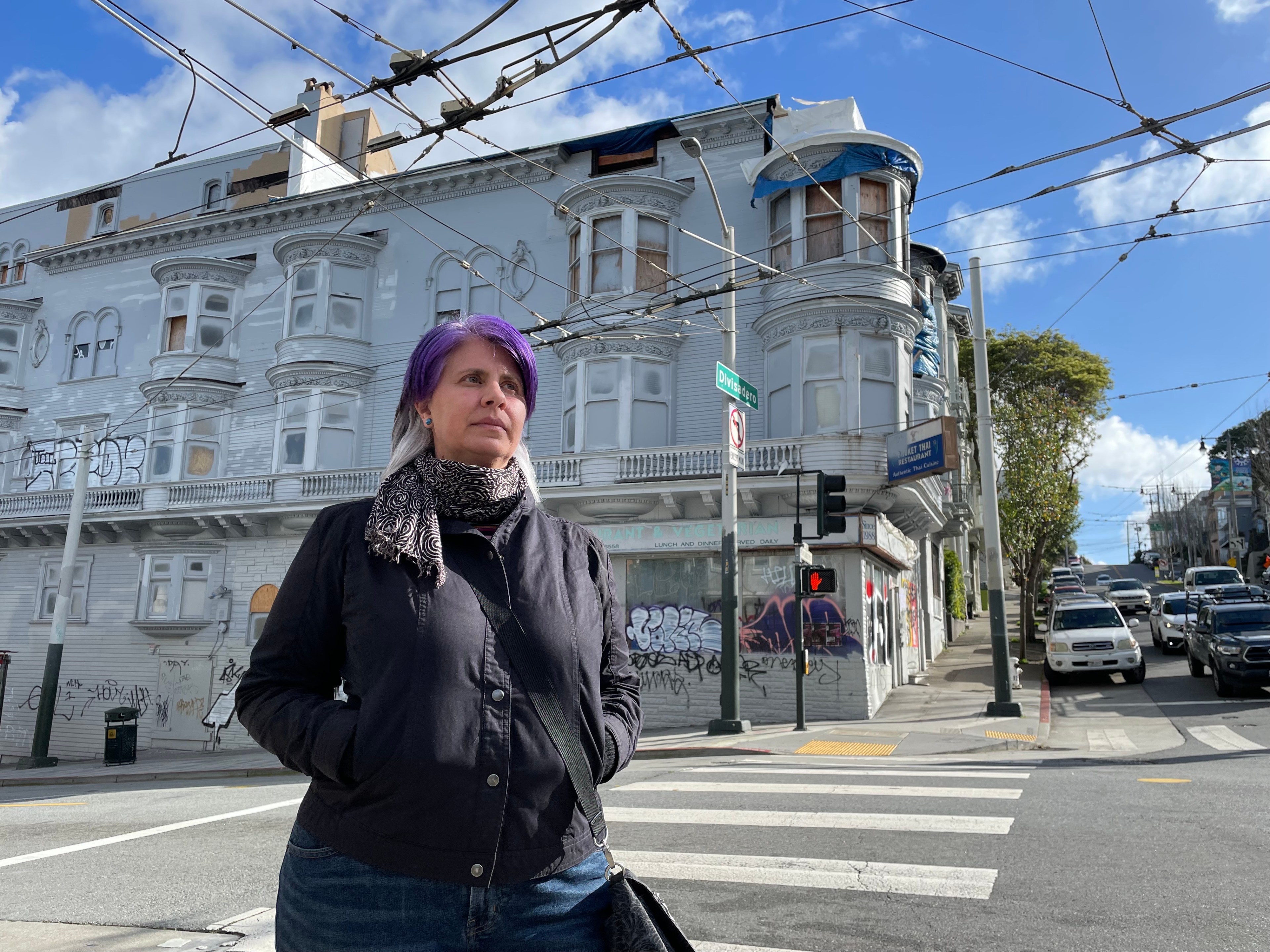A four-story Edwardian apartment building in San Francisco’s desirable Lower Haight neighborhood sits empty, and any momentum to redevelop it appears to be at a standstill.
At a glance, the building seems like an ideal one to rebuild, with space for a business on the ground floor, great transit and a bustling small business scene nearby. Golden Gate Park is just a 10-minute walk away.
The average rent for one-bedroom apartments in the neighborhood is just over $2,900, according to February data from Zumper—slightly more than the city average rent.
Although San Francisco has a looming mandate from the state to build over 80,000 homes by 2031, 244 Divisadero St. stands frozen in time after a 2022 fire. The blaze displaced all 13 tenants and a business from the rent-controlled building.
The building’s owner is refusing to discuss redevelopment plans until a lawsuit against him by former tenants is settled. No plans to rebuild are filed with the city at present.
“It’s an eyesore,” said Michael Ershov, who has lived three doors down from the fire-ravaged building for two years. “It’s just a waste of a good piece of property.”
Businesses, too, said the empty building spoils the neighborhood’s vibe.
“Haight is a beautiful street, but when they see this tagged-up building, people just keep going down [Divisadero],” said Bill Budayao, manager of Tea & Others, located directly opposite the building. “Having a business there would help. It would bring more foot traffic.”
A legal ‘morass’
In August 2022, a fire inside the building displaced the Phuket Thai restaurant on the ground floor and burned out the six apartments above.
Eleven of those tenants sued the property owner in December of that year. One tenant sued the owner separately in February 2023, alleging the owner didn’t maintain the building, which exacerbated the fire that destroyed their homes.
Ariel Gershon, the attorney for the displaced tenants, said some have found stable housing, while others are still struggling to get back on their feet.
“Everybody’s in a different situation,” Gershon said.
The tenants’ lawsuit is just one of several surrounding the property.
One of the owners, Andrew Nicholls, is suing subcontractors who maintained the building, and two insurance companies are suing Nicholls, tenants and subcontractors, claiming they neglected the building, making the fire worse. The insurance firms claim they aren’t responsible for compensating the owner or subcontractors, according to lawsuits filed in San Francisco Superior Court.
“It’s led to this morass,” Gershon said.
But Gershon said he doesn’t think legal troubles are the sole factor slowing down the redevelopment.
“I believe they could have moved forward. I don’t think this is the kind of roadblock that would stop them if they were motivated,” Gershon said. “I don’t think waiting to get repairs until the lawsuit is over is a prudent move.”
Nicholls declined to comment for this story, citing the pending lawsuit. Multiple displaced tenants contacted by The Standard also declined to speak for the same reason.
The fire is still under investigation, San Francisco Fire Department officials said.
But as the lawsuits and investigation slog on, the facade of 244 Divisadero stands looming on the corner. Across the street, Superette Market co-owner Joe Asbah has to look at it every day from behind the register of his corner store.
“If there was a building there, I’d have like 30 more customers,” Asbah said. “It’s a nice neighborhood. Don’t make it shitty with this building.”
‘Parking is already hard’
But not everyone in the neighborhood is dying to see new life in the building.
“Parking is already hard in this neighborhood,” said Alice Cassman, who has lived in a Victorian home with its own garage next to the damaged building for 23 years. “Building there would only make it worse.”
Karla Nagy, a consultant at a landscaping firm who has lived in a nearby rent-controlled apartment for 30 years, said that while affordable housing is needed in San Francisco, it doesn’t need to be built at 244 Divisadero.
“This is not the place to start,” Nagy said. “There are high-rise, luxury apartment buildings in this city that are being bought and sitting empty.”
The issue of empty San Francisco homes is not one that’s gone unnoticed by locals.
Proposition M, also known as the Empty Homes Tax, was approved by 54.5% of San Francisco voters in 2022, but it immediately faced a legal challenge from a group of property owners who argued that the measure violated their constitutional rights to keep properties vacant. A trial date for the legal challenge has been set for Dec. 9. The law went into effect on Jan. 1, but the city treasurer has not yet released details on how many empty homes are being taxed.
The neighborhood’s supervisor, Dean Preston, championed the ballot measure, claiming it would serve as an impetus for landlords to rent their properties out faster.
It charges property owners between $2,500 and $5,000 per vacant unit, depending on its size, during the first year. The tax rises to $20,000 by the third year for every unit that has been standing empty for longer than six months. It does not apply to single-family homes, leased properties or homes intended for short-term rental to tourists and other visitors.
“The lack of progress in repairing the building is unacceptable,” Preston said in an email. “The owners need to repair it and restore the rent control tenants to their homes.”
